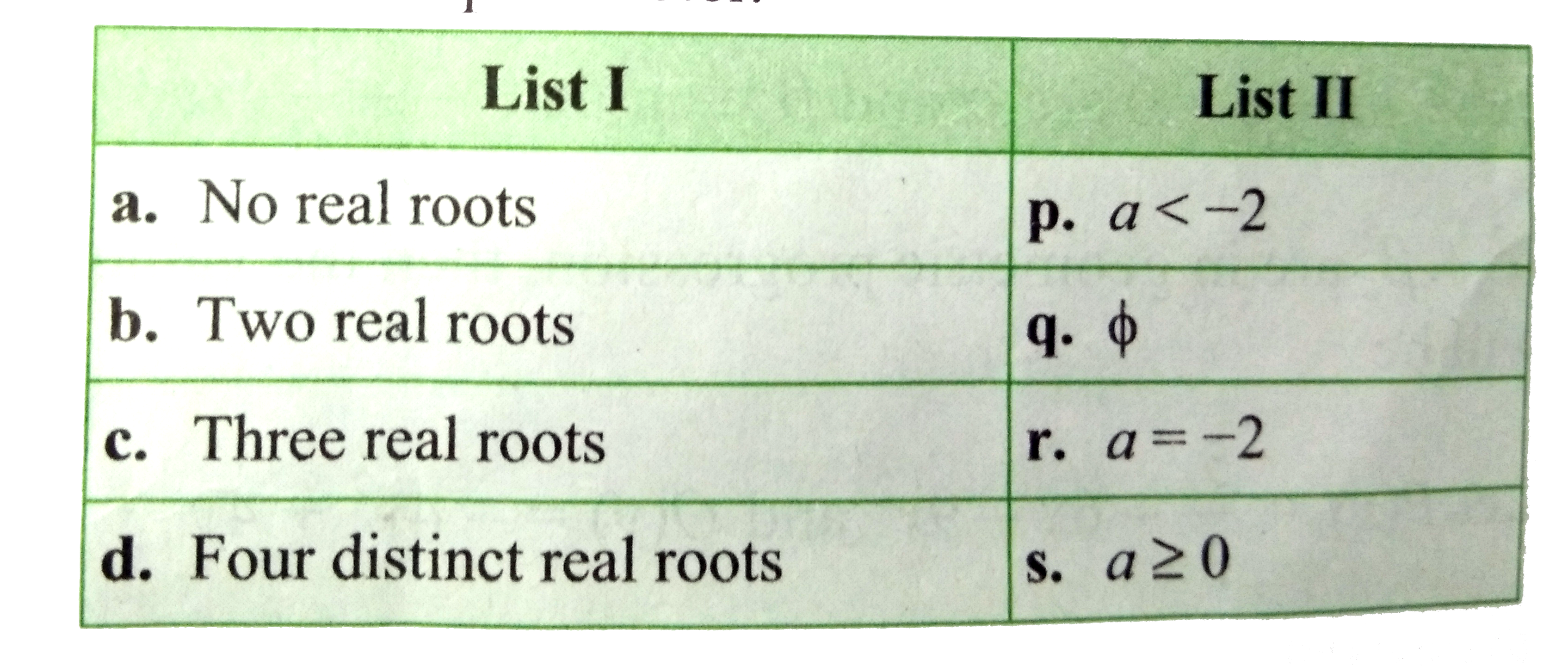(af(μ)<0) is the necessary and sufficient condition for a particular real number μ to lie between the roots of a quadratic equations f(x)=0, where f(x)=ax2+bx+c. Again if f(μ1)f(μ2)<0, then exactly one of the roots will lie between μ1 and μ2.
If |b|>|a+c|, then Solution in Bengali
one roots of f(x)=0 is positive, the other is negative
exactly one of the roots of f(x) = 0 lie in (-1,1)
1 lies between the roots of f(x) = 0
both the roots of f(x) = 0 are less than 1
The correct Answer is:2
b2>(a+c)2
⇒(a+c−b)(a+c+b)<0
⇒f(−1)f(1)<0
So, there is exactly one root in (−1,1).
Topper's Solved these Questions
- BOOK - CENGAGE PUBLICATIONCHAPTER - THEORY OF EQUATIONSEXERCISE - MATRIX MATCH TYPE6videos
THEORY OF EQUATIONS
- BOOK - CENGAGE PUBLICATIONCHAPTER - THEORY OF EQUATIONSEXERCISE - NUMERICAL VALUE TYPE43videos
THEORY OF EQUATIONS
- BOOK - CENGAGE PUBLICATIONCHAPTER - THEORY OF EQUATIONSEXERCISE - Multiple Correct Answer Type38videos
THEORY OF EQUATIONS
- BOOK - CENGAGE PUBLICATIONCHAPTER - STRAIGHT LINESEXERCISE - ARCHIVES (NUMERICAL VALUE TYPE)1videos
STRAIGHT LINES
- BOOK - CENGAGE PUBLICATIONCHAPTER - THREE DIMENSIONAL GEOMETRYEXERCISE - All Questions291videos
THREE DIMENSIONAL GEOMETRY
Similar Questions
Match the following for the equation x2+a|x|+1=0 where, a is a parameter.
 03:35View Solution
03:35View SolutionIf x=2+22/3+21/3 , then the value of x3−6x2+6x is
05:20View SolutionIf c≠0 and the equation p2x=ax+c+bx−c has two equal roots, then p can be
02:08View SolutionFor a point P in the plane, let d1(P)andd2(P) be the distances of the point P from the lines x−y=0andx+y=0 respectively. The area of the region R consisting of all points P lying in the first quadrant of the plane and satisfying 2≤d1(P)+d2(P)≤4, is
02:03View SolutionFind the angle between the line whose direction cosines are given by l+m+n=0andl2+m2−n2=0.
01:59View Solutionf(m)<0.f(x)=ax^(2)-bx+c,m lies between the roots and f(m_(1))f(m_(2))<0 ,then one of the roots will lies between m_(1) and m_(2)
02:25View SolutionLet f(x)=ax^(2)+bx+c, where a,b,c,in R and a!=0, If f(2)=3f(1) and 3 is a roots of the equation f(x)=0, then the other roots of f(x)=0 is
02:01View SolutionThe necessary and sufficient condition for which a fixed number d' lies between the roots of quadratic equation f(x)=ax^(2)+bx+c=0;(a,b,c in R), is f(d)<0
02:03View SolutionConsider the quadratic function f(x)=ax^(2)+bx+c where a,b,c in R and a!=0, such that f(x)=f(2-x) for all real number x. The sum of the roots of f(x) is
05:03View SolutionStatement-1: Ifαandβ are real roots of the quadratic equations ax2+bx+c=0and−ax2+bx+c=0, then a2x2+bx+c=0 has a real root between αandβ
Statement-2: If f(x) is a real polynomial and x1,x2∈R such that f(x1)fx2<0, then f(x) = 0 has at leat one real root between x1andx2.View SolutionLet αandβ(a<β) be the roots of the equation x2+bx+c=0, where b>0andc<0.
If both the roots of the equation x2−2kx+k2−4=0 lie between−3and5, then which one of the following is correct ?View Solution(af(μ)<0) is the necessary and sufficient condition for a particular real number μ to lie between the roots of a quadratic equations f(x)=0, where f(x)=ax2+bx+c. Again if f(μ1)f(μ2)<0, then exactly one of the roots will lie between μ1 and μ2.
If |b|>|a+c|, then03:30View Solution(af(μ)<0) is the necessary and sufficient condition for a particular real number μ to lie between the roots of a quadratic equations f(x)=0, where f(x)=ax2+bx+c. Again if f(μ1)f(μ2)<0, then exactly one of the roots will lie between μ1 and μ2.
If a(a+b+c)<0<(a+b+c)c, then05:42View Solutionएक अवतल लेन्स के पदार्थ का अपवर्तनांक μ है। यदि इसे μ1 अपवर्तनांक के माध्यम में रख दिया जाये तो निम्न दशाओं में एक समान्तर किरण-पुँज के लिए लेन्स से निर्गत किरणों का पथ दिखाइये-
μ1>μ (b) μ1<μ (c ) μ1=μ02:33View Solutionचित्र (F) में प्रदर्शित चित्रों के आधार पर (μ)का सम्बन्ध μ1,μ2 व μ3 से बताइये।
03:58View SolutionIf f is defined in [1, 3] by f(x)=x3+bx2+ax such that f(1)−f(3)=0 and f'(c) =0 where c=2+1√3, then (a, b) =
03:29View Solution

